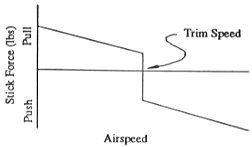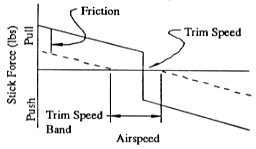Stability vs. Trimmability
![]()
Stability vs. Trimmability |
|
by Al Aitken
|
This article appeared in the September 1989 issue of the Falco Builders Letter. |
|
Al Aitken is a Marine Corps F-18 pilot and a graduate of the Patuxent River test pilot school. Now that he has fully developed his skills, his present assignment is flying a desk. Alfred Scott |
There is a need to discuss the Falco's trimmability and how it is affected by the stability and control of this wonderful airplane. I once heard a friend say the Falco was so stable that you seldom have to touch the trim. That seemed like a strange comment to me at the time, but it wasn't until I had the opportunity to fly Karl Hansen's beautiful red bird during Oshkosh '89 that I was moved to put my thoughts on paper and hopefully clear up a misconception.
As Karl and I approached Appleton's Outagamie Airport, we were instructed to report on left base for runway 21. At that point, we were cruising at 2,500 ft. MSL, clean at 165 KIAS. We were getting pretty close to a modified left base, so I reduced power and started downhill. The Falco does not slow readily, so I tried a few mild G turns to bleed the airspeed off. At 108 KIAS, I lowered the gear, and then it dawned on me that, in spite of a 57-knot airspeed decrease, the untrimmed stick force required was virtually unchanged. Things got pretty busy as Karl was talking to me, the tower was talking to another aircraft on long final and I was trying to get a word in to call my position past left base approaching short final! My attention had been diverted outside the aircraft for lineup and to look for the long final traffic when I glanced at the airspeed indicator and noticed we had slowed now to about 70 KIAS with still no significant change in stick force and no need to retrim. Why was that so?
First, a very brief review of stability and control: The stability of any airplane is its tendency to return to equilibrium when displaced. Controllability is a measure of the ease with which the pilot can displace it from equilibrium. An extremely stable airplane might be very hard to control depending on the level of controllability. An unstable airplane may be impossible to control regardless of controllability. The F/A-18 I used to fly was designed with very relaxed static longitudinal stability-almost neutral. The relaxed stability and very strong controllability make it a highly maneuverable fighter-the airplane would be extremely difficult to control without the digital flight control computers. Static longitudinal stability is normally indicated in terms of stick force versus airspeed measured about a trimmed point of equilibrium. A simple graph explains:

The important thing for most general aviation airplanes is that the slope of the curve be positive (ie. to slow down, the pilot would increase pull force on the stick). The level of positive stability is indicated by the degree of the slope of the curve. Starting from a trimmed airspeed, a very stable airplane would require significantly more pull force on the stick; a more relaxed stability airplane, much less pull force.
Hold that thought for a moment while I present one more simple graph to make my final point on trimmability as affected by stability:

Even though the Falco has some of the smoothest and most nicely harmonized controls flying, all airplanes have some friction in the control system. The friction must be overcome before the control surface will actually move and cause the airspeed to change. Plotting the friction effect on the graph above forms a hysteresis (see the dashed lines). The intersection of the hysteresis envelope with the zero stick force line spans what is known as the trim speed band. The trim speed band is a range of airspeeds in which the airplane is perfectly happy to fly with zero stick force required and no need to retrim. Now to the point-for a given amount of friction, the lower the slope of the curve (less positively stable) the wider the trim speed band. In other words, an airplane that requires very little trimming over a wide range of airspeeds may be indicative of a less, rather than more, positively stable airplane.
Why is this important to Falco builders and potential new Falco Test Pilots? I've flown four examples of Falcos now including three homebuilts and the Corporate Disgrace. All four exhibit similarly light stick forces and wide trim speed bands. In fact, I have never had to touch the trim wheel-Alfred wouldn't let me touch his. Although I do not have numerical data to support my opinion (give me 4 to 6 years to finish my Falco, and I'll provide the data), the Falco is obviously not a kid's toy. It's a pilot's machine.
In most general aviation aircraft, a primary cue for airspeed control, other than the airspeed indicator, is stick force. During an approach in a Piper Cherokee, for example, the pilot can use the push or pull force cues from the yoke to help judge airspeed. In the Falco, if you are trimmed for approach speed and don't pay close attention to your airspeed indicator, it would be very easy to get slow without realizing it. I personally like the Falco's apparent relaxed stability and silky smooth and harmonious controls; it feels more like the agile fighters that I'm used to. But the lack of stick force cues for airspeed control in the approach phase is a characteristic that should be kept in mind and compensated for.
|
|